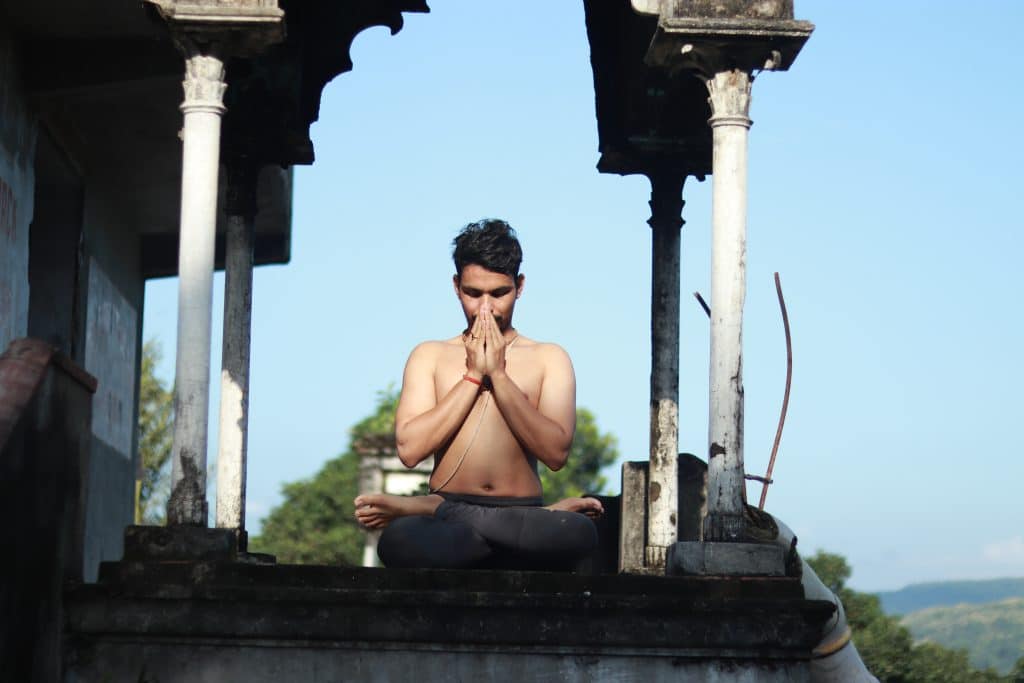Yoga is the most ancient natural science that has been healing and providing holistic benefits to the yogis’ mind, body and spirit since ages. While there are several asanas, practices within yoga and different styles that affect the outcomes of our practices. This video is one particular pose that yogis have been practicing particularly for meditation practices for thousands of years. While many of us have heard about Padmasana (or Lotus Pose), many of us also face the problem of properly understanding this pose, how to get into it, how to stay in it and how to properly exit the pose while attaining the required benefits from this pose.
If you are seeking a step-by-step guide to properly and safely perform the Padmasana, then this is the video for you. Created by the yoga master Prashant Ji, this video covers how to enter padmasana, how to stay in the pose correctly and how to safely exit the pose. Learn from the master himself.
Padmasana is also known as the lotus pose or the kamalasana. While performing this pose, some of us feel pain in the legs. Yoga Master Prashant Ji teaches us how to remain in the pose for long while remaining at ease and pain-free.
Preparing for the Lotus Pose
The first thing that he teaches us is to keep the knees locked while we forget to do it. Anatomically, the knees should not move while in yoga. The calf muscle needs to touch the inner thigh. For this, easing the muscles is important, release the knee, and to do so, simply lift each leg one by one and start bending your knee and then opening your leg like you are paddling a cycle. Do it 15 times with each leg respectively. After this, Prashant Ji suggests doing an exercise for the hips as well, to loosen the muscles in the hips. For this, he suggests performing the butterfly pose. Do it 10-15 times.
What to do?
The inner thighs should be flexible and the hips should be relaxed. For this, he suggests keeping the knees grounded rather than lifting them up off the ground to an uneven level.
How to Enter Padmasana?
Step 1A: Come into Dandasana. Keep your body straight against the wall and keep both your legs straight in front of you.
Step 1B: Bend one leg(right) at the knee till the calf touches the inner thigh. Use external rotation of the knee while doing so (to stretch the hip)
Step 2: Drop the knee to the side.
Step 3: Without changing the gap between the calf and inner thigh, lift the right foot while supporting the knees with the right hand till the heel of the right foot touches the naval.
Step 4: Tilt the upper body towards the left, rotate the left leg outwards and bend the left leg at the knee without lifting the knee. Gently lift the left foot with the help of the right hand. Let the heel of the left foot rest on the right upper thigh. Half close the knee joint.
You are now in lotus pose (a.k.a Padmasana).
How to Exit Lotus Pose?
Yoga Master Prashant Ji warns us about moving out of the pose in a haste. It is important to come out of the pose the same way as we enter, just in reverse. Hold the left leg at the bottom and gently open the left foot outwards with the help of the right hand. Slightly move the left leg forward back to dandasana.
Similarly for the other leg, open it and lift the leg and then spread it back into dandasana. He once again stresses on the importance of warming up and preparing the hips, joints to come into the lotus pose.
Common Mistake to Avoid
The master also warns the yogis not to push the knees down to keep them touching the ground as that can lead to injury.
While lifting the left leg, gently press the knee to let it remain grounded and gently lift the heel. Moving the knee at this point can lead to injury.
Learn more about yoga in detail during a 200 hour yoga teacher training in Rishikesh from the Yoga Master Prashant Ji himself at Yoga Vidya School and immerse into the intensive learning, depth and authenticity of yoga.
